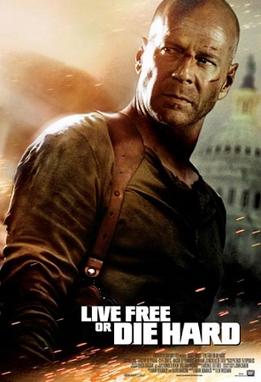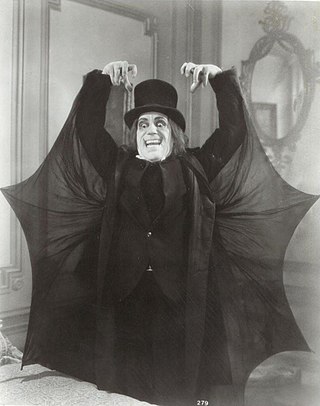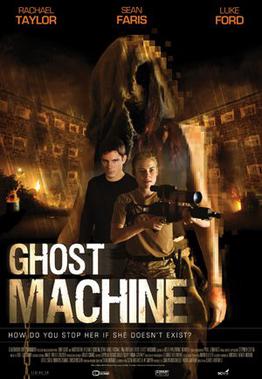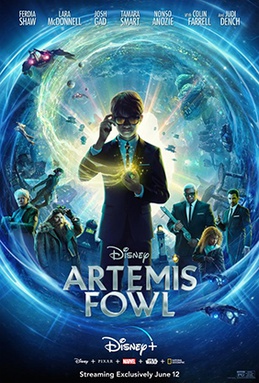Related Research Articles

VistaVision is a higher resolution, widescreen variant of the 35 mm motion picture film format which was created by engineers at Paramount Pictures in 1954.
A feature film or feature-length film is a narrative film with a running time long enough to be considered the principal or sole presentation in a commercial entertainment program. The term feature film originally referred to the main, full-length film in a cinema program that included a short film and often a newsreel. Matinee programs, especially in the US and Canada, in general, also included cartoons, at least one weekly serial and, typically, a second feature-length film on weekends.

Glory is a 1989 American historical war drama film directed by Edward Zwick about the 54th Massachusetts Infantry Regiment, one of the Union Army's earliest African-American regiments in the American Civil War. It stars Matthew Broderick as Colonel Robert Gould Shaw, the regiment's commanding officer, and Denzel Washington, Cary Elwes, and Morgan Freeman as fictional members of the 54th. The screenplay by Kevin Jarre was based on the books Lay This Laurel (1973) by Lincoln Kirstein and One Gallant Rush (1965) by Peter Burchard and the personal letters of Shaw. The film depicts the soldiers of the 54th from the formation of their regiment to their heroic actions at the Second Battle of Fort Wagner.

A movie projector is an opto-mechanical device for displaying motion picture film by projecting it onto a screen. Most of the optical and mechanical elements, except for the illumination and sound devices, are present in movie cameras. Modern movie projectors are specially built video projectors.

A trailer is a commercial advertisement, originally for a feature film that is going to be exhibited in the future at a movie theater/cinema. It is a product of creative and technical work.

The Kentucky Fried Movie is a 1977 American independent sketch comedy film, produced by Kim Jorgensen, Larry Kostroff, and Robert K. Weiss, and directed by John Landis. Among the numerous star cameos are George Lazenby, Bill Bixby, Henry Gibson, Barry Dennen, Donald Sutherland, Tony Dow, Stephen Bishop, and the voice of Shadoe Stevens. According to writer David Zucker on the DVD commentary track, David Letterman auditioned for the role of the newscaster, but was not selected. The film also features many former members of The Groundlings and The Second City. The "feature presentation" portion of the film stars Evan C. Kim and hapkido grand master Bong Soo Han. The Kentucky Fried Movie marked the first film appearances of a number of actors who later became famous, and launched the careers of the Zucker brothers, Abrahams and Landis.
Film-out is the process in the computer graphics, video production and filmmaking disciplines of transferring images or animation from videotape or digital files to a traditional film print. Film-out is a broad term that encompasses the conversion of frame rates, color correction, as well as the actual printing, also called scannior recording.

Live Free or Die Hard is a 2007 American action-thriller film directed by Len Wiseman, and serves as the fourth installment in the Die Hard film series. It is based on the 1997 article "A Farewell to Arms" written for Wired magazine by John Carlin. The film's name is adapted from New Hampshire's state motto, "Live Free or Die".
In filmmaking, dailies are the raw, unedited footage shot during the making of a motion picture. The term comes from when movies were all shot on film because usually at the end of each day, the footage was developed, synced to sound, and printed on film in a batch for viewing the next day by the director, selected actors, and film crew members. After the advent of digital filmmaking, "dailies" were available instantly after the take and the review process was no longer tied to the overnight processing of film and became more asynchronous. Now, some reviewing may be done at the shoot, even on location, and raw footage may be immediately sent electronically to anyone in the world who needs to review the takes. For example, a director can review takes from a second unit while the crew is still on location or producers can get timely updates while travelling. Dailies serve as an indication of how the filming and the actors' performances are progressing. The term was also used to describe film dailies as "the first positive prints made by the laboratory from the negative photographed on the previous day".

A lost film is a feature or short film that no longer exists in any studio archive, private collection or public archive.

Grindhouse is a 2007 American film written and directed by Robert Rodriguez and Quentin Tarantino. Presented as a double feature, it combines Rodriguez's Planet Terror, a horror comedy about a group of survivors who battle zombie-like creatures, and Tarantino's Death Proof, an action thriller about a murderous stuntman who kills young women with modified vehicles. The former stars Rose McGowan, Freddy Rodriguez, Michael Biehn, Jeff Fahey, Josh Brolin, and Marley Shelton; the latter stars Kurt Russell, Rosario Dawson, Vanessa Ferlito, Jordan Ladd, Sydney Tamiia Poitier, Tracie Thoms, Mary Elizabeth Winstead, and Zoë Bell. Grindhouse pays homage to exploitation films of the 1970s, with its title deriving from the now-defunct theaters that would show such films. As part of its theatrical presentation, Grindhouse also features fictitious exploitation trailers directed by Rodriguez, Rob Zombie, Edgar Wright, Eli Roth, and Jason Eisener.

Gay pornography is the representation of sexual activity between males. Its primary goal is sexual arousal in its audience. Softcore gay pornography also exists; which at one time constituted the genre, and may be produced as beefcake pornography directed toward heterosexual female, homosexual male and bisexual audiences of any gender.
Richard W. Haines is an American independent genre filmmaker and film historian best known for his cult movies Space Avenger, Run for Cover in 3-D, and Splatter University, and the book Technicolor Movies.

A film – also called a movie, motion picture, moving picture, picture, photoplay or (slang) flick – is a work of visual art that simulates experiences and otherwise communicates ideas, stories, perceptions, feelings, beauty, or atmosphere through the use of moving images. These images are generally accompanied by sound and, more rarely, other sensory stimulations. The word "cinema", short for cinematography, is often used to refer to filmmaking and the film industry, and to the art form that is the result of it.

Ghost Machine is a British science fiction film, directed by Chris Hartwill and based on a screenplay by writer Sven Hughes and Malachi Smyth. It stars Rachael Taylor, Sean Faris and Luke Ford.
None but the Brave (1928) is an American silent film, released by Fox Film Corporation, directed by Albert Ray, and starring Charles Morton as Charles Stanton, Sally Phipps as Mary. The film also co-starred J. Farrell MacDonald, Sharon Lynn, and Tom Kennedy. One or two sequences were filmed in a two-strip Technicolor, made of black-and-white 35mm film dyed in colors. The film consists of six reels.

The Tremors franchise consists of a series of American monster comedy-horror films and a spin-off television show, with a plot centered around attacks from subterranean worm-like creatures known as Graboids. It began in 1990 with the release of Tremors, which spawned a series of direct-to-video films and the titular television series. In 2017, a second television series was ordered to air on Syfy, and a pilot was shot, but the project was ultimately cancelled.

Quicksands is a 1923 American silent crime drama film directed by Jack Conway, written by Howard Hawks, and starring Helene Chadwick and Richard Dix. The supporting cast features Alan Hale Sr., Noah Beery Sr. and Jean Hersholt. The film was released on February 28, 1923, by American Releasing Corporation.

Artemis Fowl is a 2020 American science fantasy action adventure film based on the 2001 novel of the same name by Irish author Eoin Colfer. Directed by Kenneth Branagh, from a screenplay co-written by Conor McPherson and Hamish McColl, the film stars Ferdia Shaw, Lara McDonnell, Josh Gad, Tamara Smart, Nonso Anozie, Colin Farrell, and Judi Dench. It details the adventures of Artemis Fowl II, a twelve-year-old Irish prodigy who teams up with his faithful servant, as well as a dwarf and a fairy, in order to rescue his father, Artemis Fowl I, who has been kidnapped by another fairy looking to reclaim an item the Fowl family has stolen.

A Sound Sleeper is a 1909 American comedy film directed by D. W. Griffith and produced by the American Mutoscope and Biograph Company. The short was filmed in one day in the Coytesville borough of Fort Lee, New Jersey, which at the time was a popular filming location for many early motion-picture studios in the northeastern United States. Due to the brief running time of this comedy, it was originally distributed in April 1909 on a split reel with another Biograph release, a longer dramatic film titled The Winning Coat.
References
- ↑ "Film Threat | Your Independent Movie Guide" . Retrieved 2023-03-28.
- ↑ The Encyclopedia of Underground Movies, Michael Wiese Productions. ISBN 0-941188-95-7